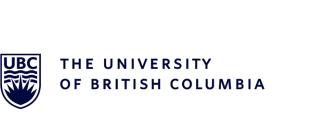Suffering, Stories, and Healing: Narrative Medicine Tools for Health Care Providers | Webinar by Dr. Katrina Genuis
May 30, 2018, 12:00 pm to 12:00 pm
Pain and suffering are not static entities. They appear differently throughout history, across cultures, from one human to the next. One person might continue to find life meaningful and fulfilling despite pain; another might experience pain as a destroyer of meaning and identity. When caring for those in pain, our goal is not only to try and stop the pain, but to alleviate suffering, even if the pain itself persists.
When considering a patient’s experience of suffering, philosophical and theological considerations specific to each patient’s narrative and sense of meaning in the world become central aspects of patient care.
In this webinar, we will explore the difference between pain and suffering, focusing on suffering as the dimension of existence we aim to heal when pain is intractable. Underpinning our discussion with philosophical and theological explorations of the concept of suffering, we will focus on the role of Narrative Medicine in the care of chronic pain patients. Suffering may relate to narrative wreckage, a sense that one’s life story is halted and the life-giving components of identity are destroyed, leaving only a hopeless, plotless vision of the future.
By focusing care specific to each patient’s life narrative, health care providers can better understand why patients suffer and feel a crisis of identity amidst pain, provide them with the tools to be resilient in their particular context, and most importantly, empower them to regain agency and hope within their stories, even stories that include pain. Health care providers can easily adopt a “narrative medicine” approach in their daily work with a few alterations in how they ask questions, listen, and provide advice to patients in pain.
This webinar will provide these tools and resources, and may be useful for both patients and health-care providers.
Learning objectives:
Differentiate between pain and suffering
Re-focus care on an alleviating patient’s experience of suffering rather than pain alone
Explain the basics of narrative medicine and the reason why it is critical in chronic pain medicine
Practical narrative medicine tools to aid in conversations with those in pain
About Katrina Genuis, M.Litt., M.D.
Katrina is an anesthesiology resident doctor curious about the intersection between medicine and the humanities, the relationship between the physiologic aspects of existence and the metaphysical qualities of being. As an undergraduate, she mixed art history and theology courses into her chemistry degree, and in medical school, she initiated a weekly Bibliotherapy program at a Respite Care Center for patients with dementia, a form of therapy that uses stories and literature as a tool to promote social and cognitive wellbeing.
Within anesthesiology, she hopes to specialize in chronic pain medicine and palliative care. In order to learn holistically about these complex experiences, she spent a year away from residency pursuing a Master’s Degree in Scotland at the Interdisciplinary Institute for Theology, Imagination and the Arts and focused on autobiographies written by women experiencing chronic pain.

